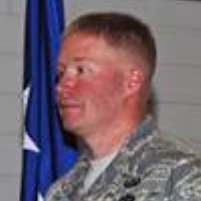Photos of Military Coffins Allowed after 18-Year Ban
Tuesday, April 07, 2009
 Air Force Staff Sgt. Phillip A. Myers
Air Force Staff Sgt. Phillip A. Myers
After almost two decades, the American public finally was able to witness the return of a fallen soldier last Saturday when the body of an airman arrived at Dover Air Force Base in Delaware. Air Force Staff Sgt. Phillip A. Myers was killed in Afghanistan by an improvised explosive device. With the approval of his family, the media was allowed to cover the arrival of his remains, the first such coverage since President Barack Obama ordered the Defense Department to reverse its policy of denying the media access to recording the return of dead servicemen from Iraq and Afghanistan.
The policy actually predated the current conflicts, having been first implemented by the administration of President George H. W. Bush during the Persian Gulf War of 1991. Then, military officials were determined not to repeat the damaging publicity of the Vietnam era, when television images of thousands of body bags returning home brought the unpopular conflict right into the homes of the American public.
The media blackout policy became a hotly debated issue during another unpopular conflict, as the administration of George W. Bush tried to convince the American public that the 2003 invasion of Iraq was justified. To opponents of the Iraq war, the policy kept the ongoing conflict away from the public eye and disguised the cost of war, while administration supporters argued the policy allowed families to grieve in private.
-Noel Brinkerhoff
First Photos of Fallen Soldier Ends 18-Year Ban (by David Kerley and Ki Mae Heussner, ABC News)
Doleful Arrivals Open to Public (by Christian Davenport, Washington Post)
A Coffin, a Flag, a Photograph (New York Times)
- Top Stories
- Unusual News
- Where is the Money Going?
- Controversies
- U.S. and the World
- Appointments and Resignations
- Latest News
- Trump to Stop Deportations If…
- Trump Denounces World Series
- What If China Invaded the United States?
- Donald Trump Has a Mental Health Problem and It Has a Name
- Trump Goes on Renaming Frenzy






Comments